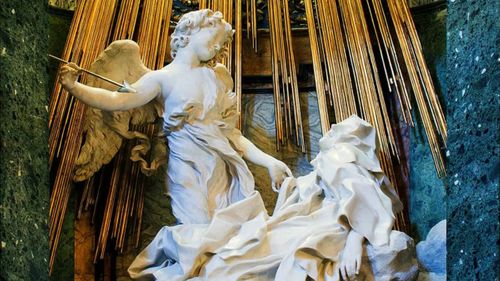Divine Rapture in Marble: A Guide to the Magic of Bernini's 'Ecstasy of Saint Teresa
Mar 06, 2024 · 2 mins read
0
Share

Bernini's "Ecstasy of Saint Teresa" captures a divine moment frozen in marble, a spiritual awakening so intense it blurs the line between pain and pleasure.
Save
Share
This 17th-century masterpiece, housed in Rome's Santa Maria della Vittoria, depicts Saint Teresa's vision of an angel piercing her heart with a golden arrow, symbolizing God's love.
Save
Share
Bernini's genius lies in his ability to make marble mimic flesh; Teresa's robes ripple with a life of their own, suggesting a heavenly wind that breathes through the chapel.
Save
Share
The sculpture's theatricality is heightened by the setting Bernini designed, complete with hidden window that bathes Teresa in a celestial light, as if the divine were truly present.
Save
Share
Teresa's face is a study in paradox, at once wracked with agony and suffused with bliss, challenging viewers to comprehend the complexities of mystical experience.
Save
Share
Critics have long debated the overt sensuality of the piece, with Teresa's swoon resembling a lover's rapture, pushing the boundaries of religious art.
Save
Share
Bernini's work is Baroque drama in stone, engaging onlookers in a narrative that unfolds in the round, inviting them to circle the ecstasy from all angles.
Save
Share
The angel's delicate touch, juxtaposed with the implied penetration of the arrow, creates a tension that is both unsettling and captivating, a hallmark of Bernini's style.
Save
Share
"Ecstasy of Saint Teresa" is not just a religious icon; it's a commentary on the human capacity for spiritual and emotional transcendence.
Save
Share
Bernini's sculpture remains a testament to the power of art to evoke the ineffable, to stir the soul, and to leave us in awe of the sublime interplay between the earthly and the divine.
Save
Share
0